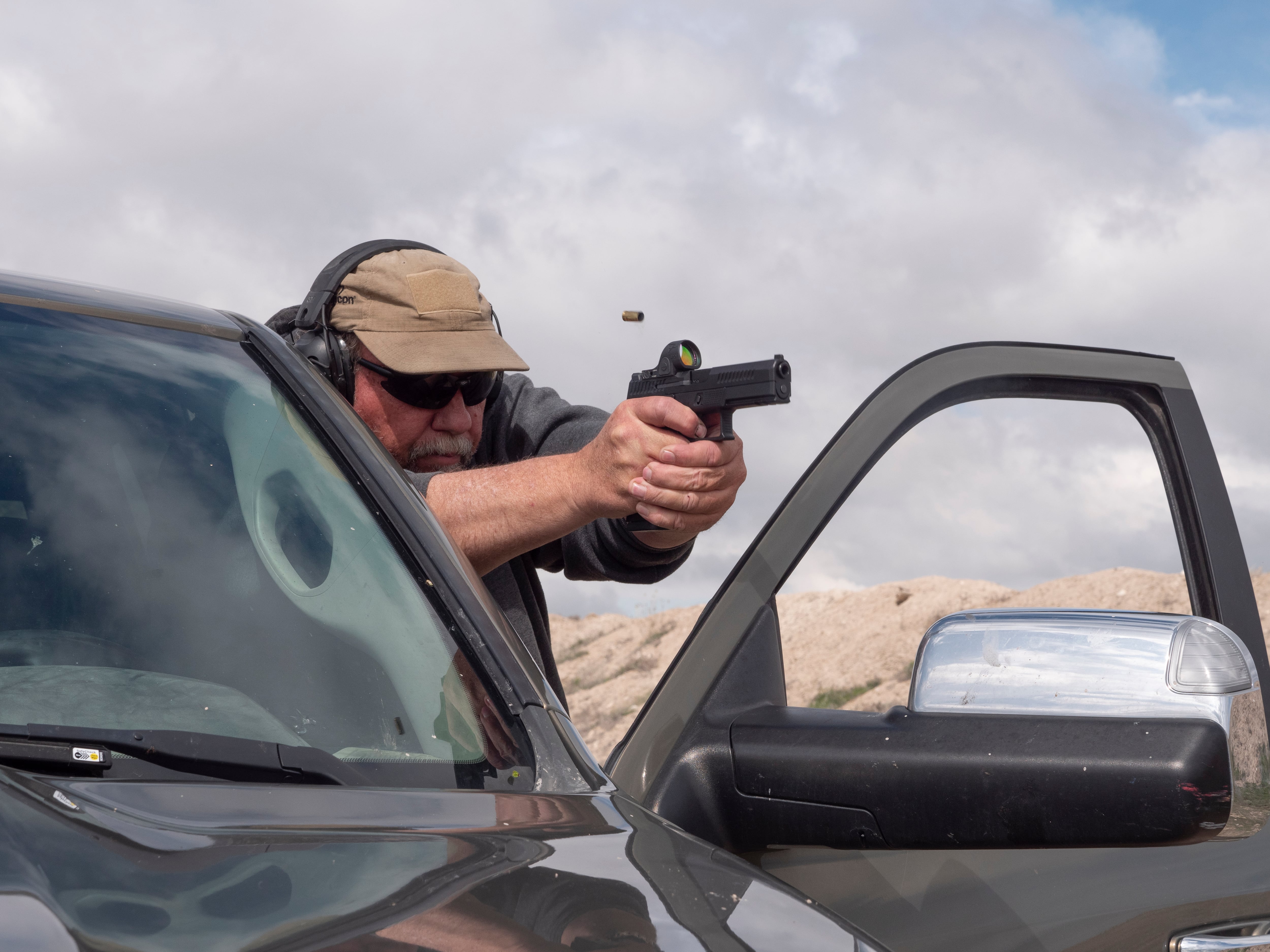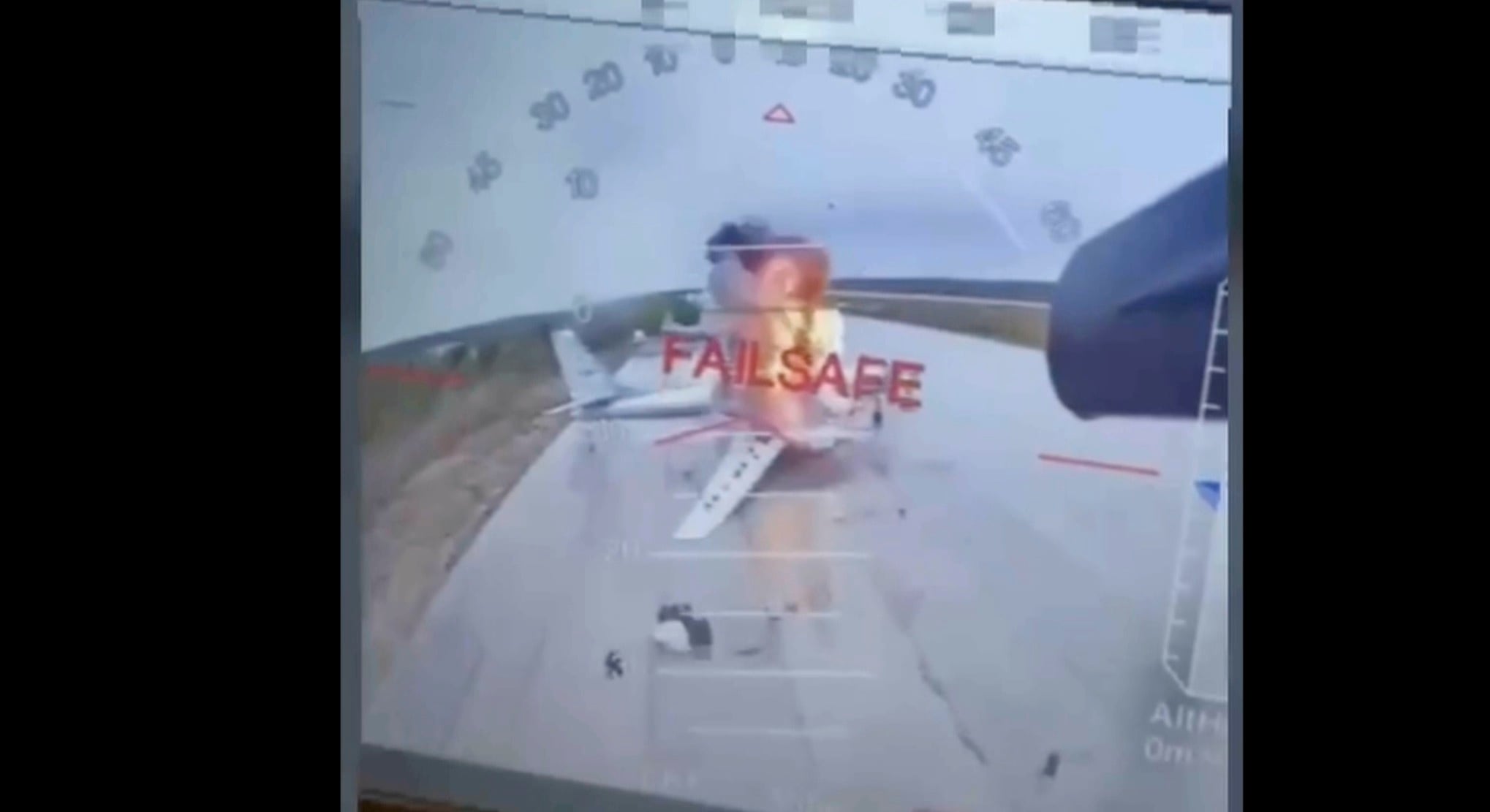Sightline Media Group, LLC writes about products and services to help our readers navigate when shopping online. Sightline Media Group, LLC may receive a share of revenue from our affiliate partners if you purchase products or contract services through our links.
Red dot sights for pistols are becoming widely accepted and one of the hottest topics in the industry.
Experts once called them a gaming toy never to be used on the street or for duty, but those days are long gone. Considered all but mandatory on rifles these days, it’s a far cry from “iron sights rule."
Irons are great, you should learn on and practice with them, but denying yourself the ability to better aim and get hits on a threat or target is kind of ridiculous.
It was only a matter of time before pistols would see the same progression.
As Mini Red Dot Sights get smaller, stronger and easier to see, shooters are starting to recognize the advantages. Just like rifles it’s easier to aim and get hits in a number of conditions. Optics-ready pistols are becoming the norm rather than the exception, with new models regularly coming to the market.
It begs the question, are they for me, and if so which one?
Let’s bust a myth or two and provide some honest direction.
Red dot tip: Pistol optics are tough as a hammer
Over 40 years of shooting I have had front and rear sights fall off, dots come out and every conceivable level of pistol fail from fantastic plastic to works of machining art.
It’s mechanical, failure is inevitable and indestructible is a marketing ploy not reality. Red dot sights are no exception, and just like their rifle predecessors, they failed a bunch to start and have improved considerably.
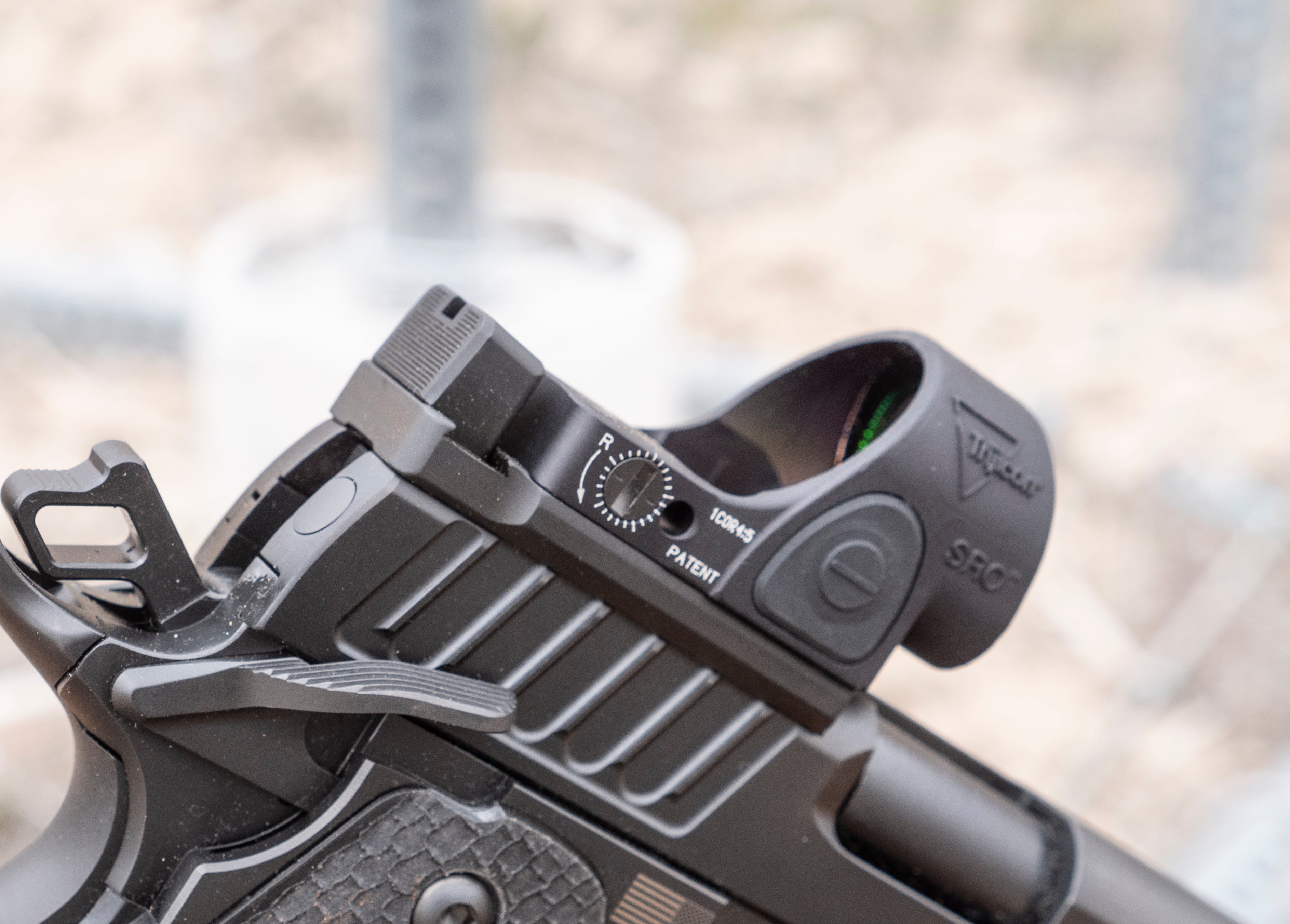
Perfect? Nope.
But getting close, and sights exist to fit most needs. Not everyone needs an RDS that can be dropped from a helicopter, run over by a tank then submersed at 33 feet for an hour without losing zero.
Some do, or at least think so. Avoid getting sucked into the idea your equipment is not usable unless you can smack it with a sledge hammer and keep on trucking.
Red dot tip: Pistol optics (generally) make you faster
It’s pretty simple, accuracy and speed at close range are about position, natural point of aim, stability and a good trigger press. It’s not the dot, blade or glow stick on the front. Any difference will be negligible inside seven yards, maybe even 10 yards.
The better you were before the RDS the less the difference.
The fastest shooters on planet Earth use red dot sights, have for years, but few did so to hit an ISPC target faster at 10 yards. Many are faster without sights than us mere mortals with them.
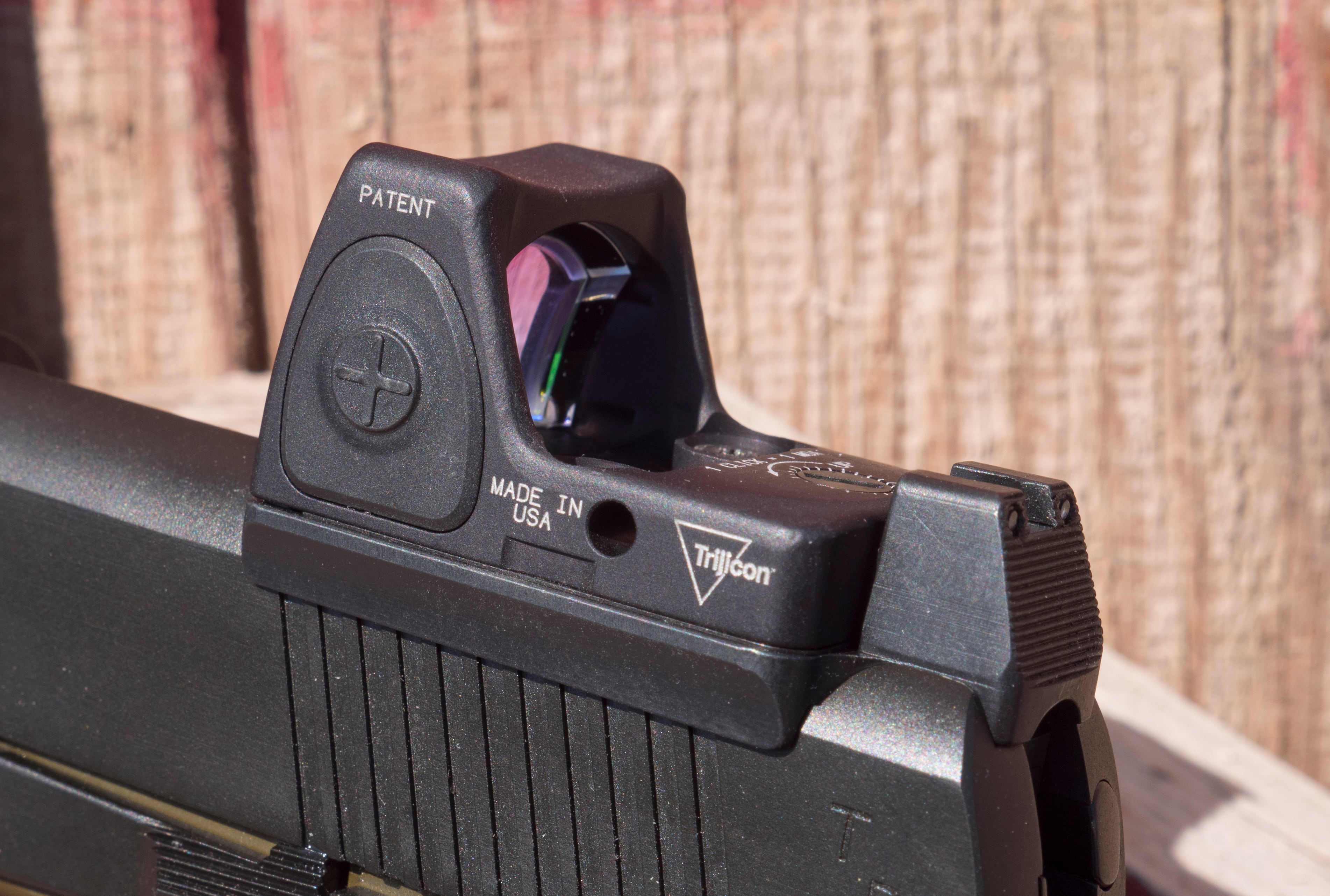
But move things out farther and that all changes almost without regard to your skill level.
Fist sized groups on a six inch steel at 50 yards is the norm for me using an RDS. At 25 yards from a supported position they are clustered together. Even from offhand it’s not hard to stay inside that fists distance at 25 yards.
Even hitting a silhouette at 100 yards is possible without much difficulty. If you can hold the dot reasonably steady you can get hits and it’s a ton easier to do it with an RDS than a front sight, especially as you age.
And that is another advantage. The older you get the harder it is for most to focus on that front sight or even see it. Picking up that red dot is a ton easier. Add movement and it gets even better.
Hold the dot on target and press, no need to “align” a rear sight. Using solid basics, recoil and muzzle control and proper training you will be more accurate, faster, and have better repeat shots using a dot in most every situation.
Red dot tip: Don’t chase the dot
The “trick” to using a pistol red dot is simple — don’t chase the dot.
If you are an experienced shooter do what you’ve always done, build and maintain solid basics. Bring the pistol to target the same way you always have, and there will be a dot there — generally before the front sight.
Don’t chase it, just see it, don’t change your stance, grip, or anything else, it’s a sight not anything magic and basics win the day. For many new shooters it’s even easier because its easier to see the sight, just like it is on a rifle.
Stay focused on that dot, just like your front sight there is just no need to align the rear, if the dots on target you are too. Keep the dot on target and press away with a smooth straight trigger pull disturbing that dot as little as you can.
Toughest pistol red dots
If you feel like your sight must survive punishment there are a few proven examples, or at least mostly proven. Trijicon’s type 2 RMR is the big dog in that hunt.
[BUY NOW: Trijicon RMR pistol red dot]
Designed to withstand as much punishment as an MRDS can they are about as rugged as it gets, proven in testing and during duty and military use.

Leupold’s Delta Point PRO is next with quite a bit of testing under pretty harsh conditions.
Aimpoint’s new ACRO looks to fit this category as well, it’s just new.
[BUY NOW: The new Aimpoint ACRO pistol red dot]
Same goes for the Sig Sauer Romeo 1 Pro model and the Trijicon SRO.
[BUY NOW: Trijicon SRO pistol red dot]
Military-issue pistol red dots
Both the Delta Point Pro and Trijicon’s RMR / SRS have secured military contracts making them solid and proven choices. Given time, testing, and an ever increasing demand, those choices will increase.
Carry sights need to be strong and hold up to daily use, but can be smaller and easier to conceal fitting on smaller pistols.
Concealed carry pistol red dots
Shield Sights makes several including the RMS-C (Compact), one of the most popular. Their new RMS-W is water proof and uses a harder glass screen.
Sig Sauer Electro Optics’ latest Romeo Zero is a great example of a compact sight designed around their Sig P365 XL pistol.
[BUY NOW: Sig Sauer Romeo Zero pistol red dot]
With new sights hitting the market almost monthly there are a ton of choices that are excellent for most. Vortex has offered several sights for years, Crimson Trace has jumped into this market with a vengeance.
Budget pistol red dots
Holosun has really started to catch on and offer a full line of quality sights. If it’s truly just for fun or on a rimfire, many of the less expensive imports are fine and just plain fun.
[BUY NOW: Holosun Reflex pistol red dot sight]
It’s really all about what you are going to do with the pistol it’s on, not everything is best served by spending more on the sight than the pistol.
Best pistol red dot mounts
One of the more daunting and honestly irritating issues with a pistol RDS is mounting them on your pistol.
The two most common mounting patterns are the Trijicon RMR and Leupold Delta Point Pro along with the Shield Sights for the smaller pistols.
It seems as if everyone else is doing their own thing.
[BUY NOW: Reptilia pistol red dot mount for Trijicon RMR]
Sig Sauer’s P320 is fit for their Romeo 1 Pro, it will work with a Delta Point Pro but is not really designed for it.
Everyone seems to put their locking pins in a different spot. Many factory pistols will offer plates that fit into their slide that let you use several of them.
FN America’s 509 is a great example as is Glock’s MOS line. Others have slides cut to fit one pattern — the Sig P365 XL and new Springfield Armory Hellcat are good examples. Both use the Shield RMSc pattern, perfect for their size.
Universal seems to be the thing for factory offerings, but custom CNC machining is available for just about anything. Ultimately the fit at the front and rear of the RDS in the cut the less it beats up the sight.
Red dot tip: Install backup iron sights
My personal preference and recommendation is that carry or duty pistols have back up iron sights that can be co-witnessed if possible. Whether the rear is in front or behind the RDS is personal preference, or dictated by space on the slide.
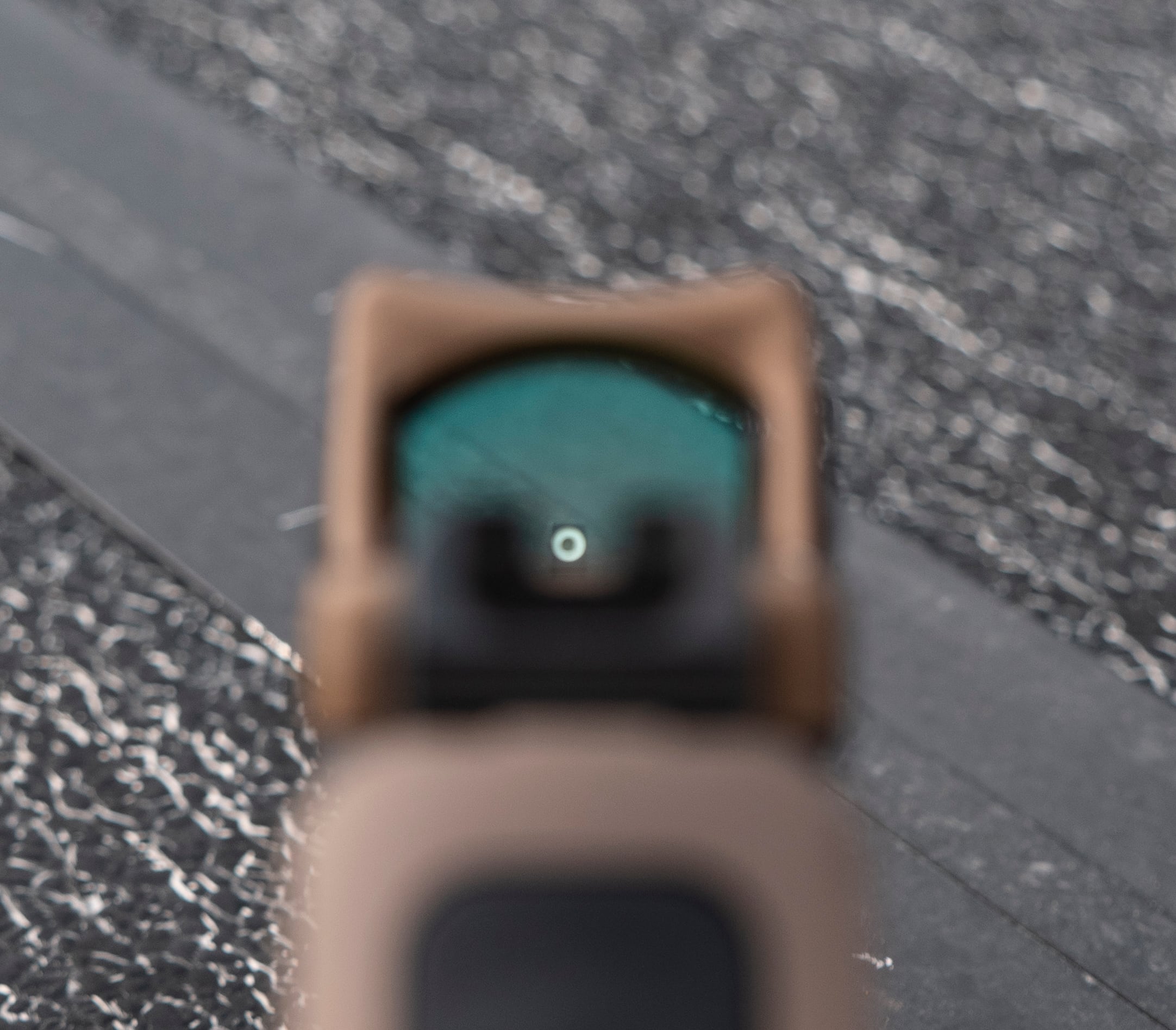
Many newer RDS have built in rear sights that line up with the front and that’s fine, especially with smaller pistols. It’s just not acceptable (to me) to end up with no visible sighting mechanism on a carry pistol and iron sights insure that.
Red Dots break, all of them, and you need sights in a fight. Until these new RDS are “perfect,” better to have and not necessarily need than the reverse.
Competitive shooters seldom have iron sights on their RDS equipped pistols. Given their time on the trigger, they are practiced at indexing through the screen. Besides, no one’s life depends on what they do at a match.
Just like on a rifle, it does remove any distractions and with practice is incredibly fast. Same could be true with a range pistol — one that is never carried. Some will practice with no iron sight on a range or game pistol and carry the same kind of pistol with iron sights.
It does make it easy to get dialed in on the dot while still providing a basic system for fighting.
Red dot tip: Get with the program and buy one
Consumer demand drives improvement and the industry is catching up.
Perfect? Not by a long shot.
But pistol red dots are getting better with no end in sight to their capabilities. None are magic wands making you lightning fast but they offer serious improvements for many.
Each has its own strengths and weaknesses depending on who they were designed for. As they become smaller, more rugged and better proven, they will only increase in use. Make sure to get some training, don’t just shoot a magazine and call it good.
If you are going to use it in a fight, step up and use one that’s combat proven.
Above all, practice, because all an RDS does is help you aim, not shoot — and that is only made better through practice.
Sightline Media Group, LLC writes about products and services to help our readers navigate when shopping online. Sightline Media Group, LLC may receive a share of revenue from our affiliate partners if you purchase products or contract services through our links.
